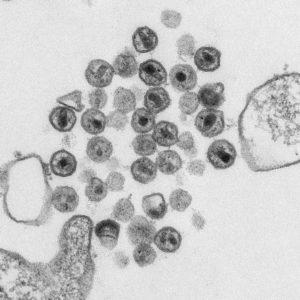It has been shown that young women are at higher risk of acquiring HIV as opposed to young men. Since sexual transmission is the main route of infection for women it is important to understand the factors influencing HIV transmission in the female reproductive tract (FRT).
HIV usually enters the FRT through semen and passes through the epithelial barrier where it comes into contact with target cells. These cells are mainly T cells and macrophages. Dendritic cells are able to capture the virus and migrate with it to the lymph nodes. This causes the establishment and subsequent spread of the virus.
There are two main types of dendritic cells. One type are pre-primed myeloid subsets which are either CD1C+ or CD103+. There are also monocyte-derived dendritic cells. In the FRT, all three types of dendritic cell are present.
Not much was known about which type of dendritic cells capture HIV and transport it to the lymph nodes and where this initial binding takes place. Therefore, researchers at Dartmouth University explored this further.
As presented by Marta Rodriguez-Garcia at the HIV Research for Prevention conference, they took hysterectomy samples from participants and looked at the endometrium, endo-cervix and ecto-cervix to characterize the dendritic cells populations in each FRT compartment. They found the different dendritic cell phenotypes in all the compartments. CD14+ dendritic cells were broadly dispersed throughout the FRT while CD14- dendritic cells were only in the endometrium.
They then investigated which dendritic cells were involved in HIV capture. They found that CD14+ dendritic cells were involved in the capture process and this took place in all the compartments of the FRT.
To investigate the mechanism behind this they looked at the dendritic cell receptor DC-SIGN which has previously been shown to bind to HIV. Interestingly, they found that both DC-SIGN+ and DC-SIGN- dendritic cells could capture HIV.
In summary, the researchers found that different dendritic cell subsets reside in the FRT. The dendritic cells are able to capture HIV in all compartments of the FRT and this can happen independent of the DC-SIGN receptor. Therefore, this efficient HIV capture in the FRT could be a reason why females are much more susceptible to HIV infection.
Presentation webcast: HIV Research for Prevention 2016 webcasts
Article by Thandeka Moyo












